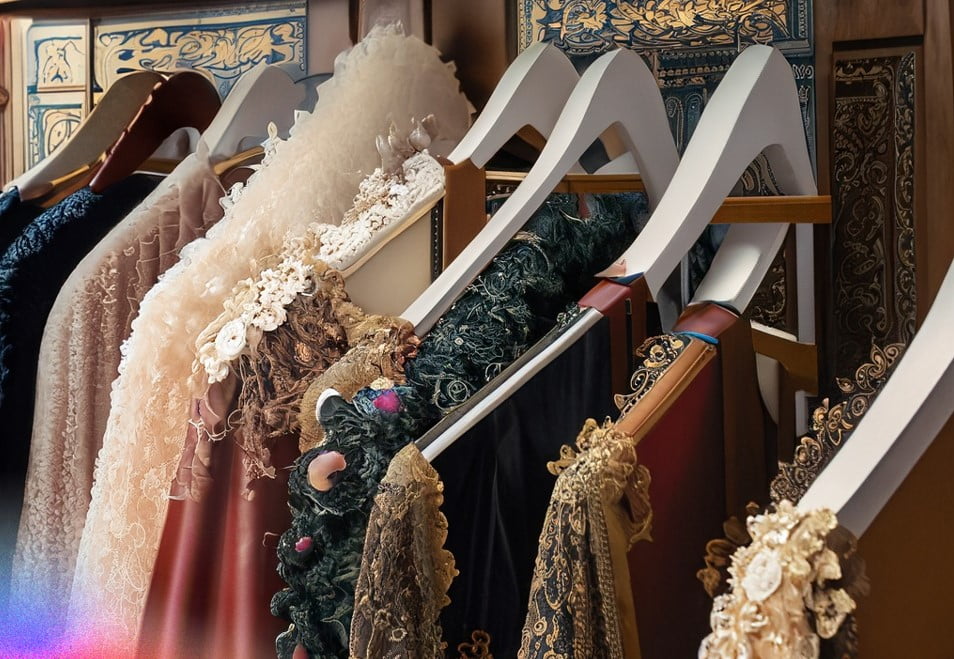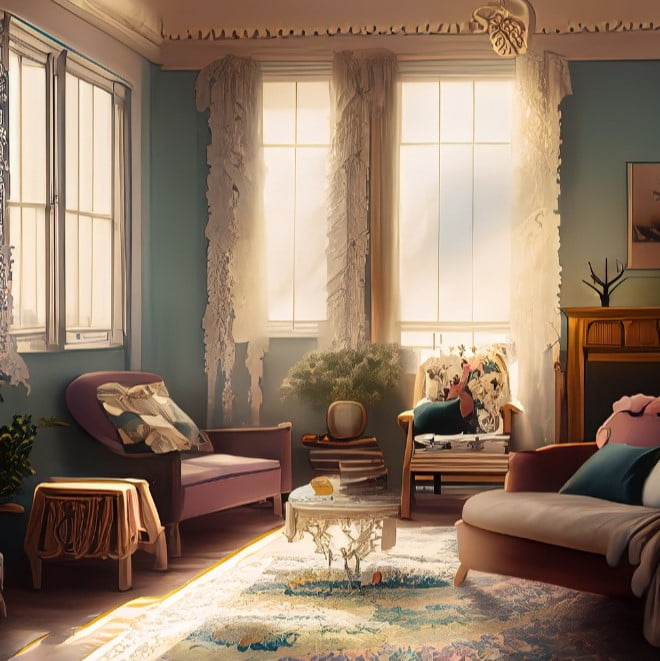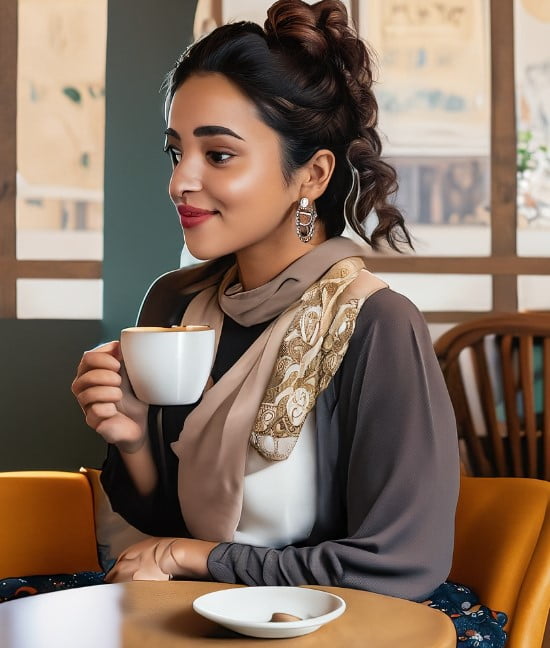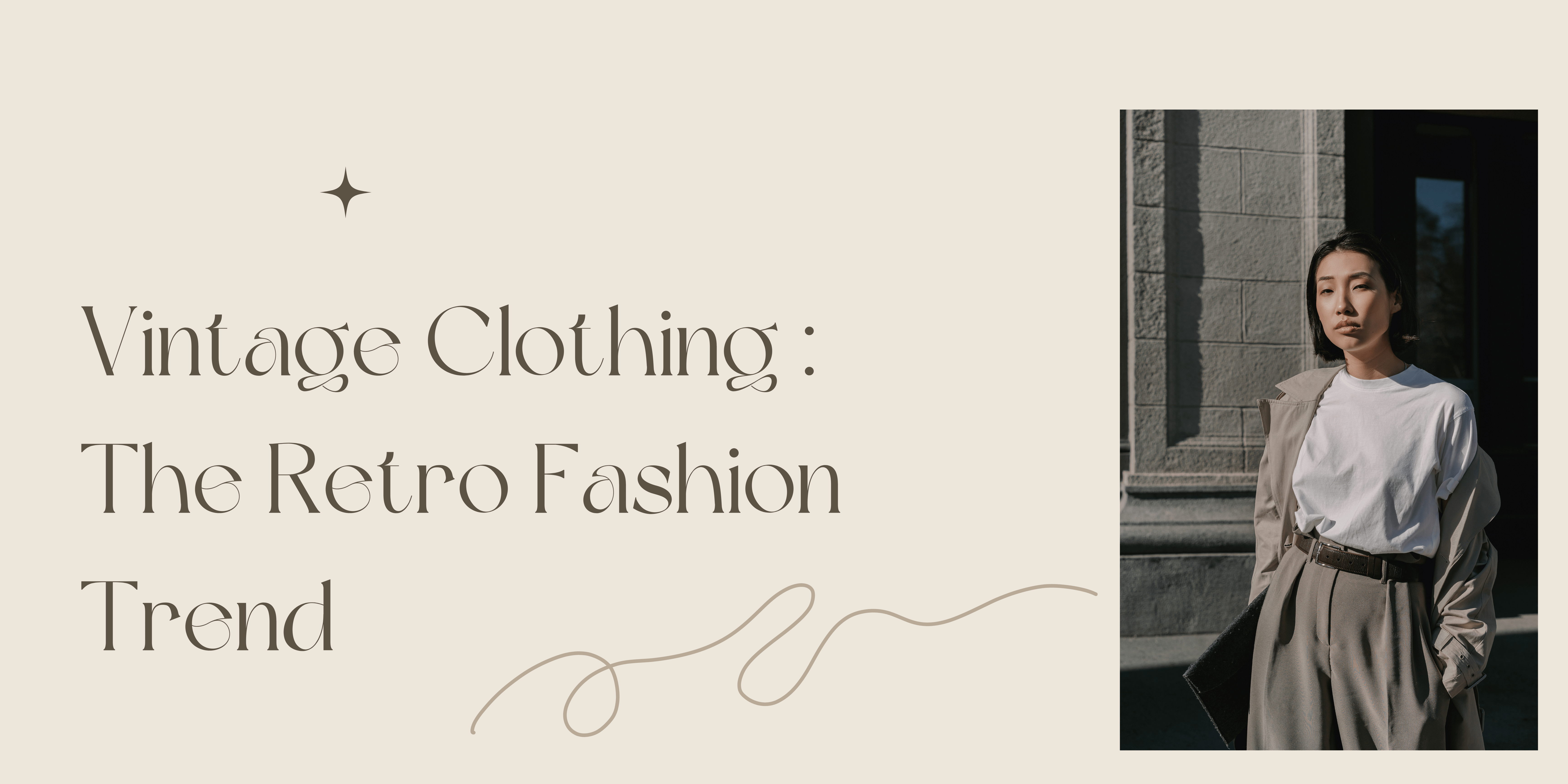Do you want to infuse your Vintage clothing with a little nostalgia since you’re sick of the same old modern fashion trends? Vintage attire is the answer. In recent years, vintage fashion has made a surprising resurgence, capturing the attention of fashion fans with its classic appeal. This article will go into the world of vintage clothing, analyzing its popularity, history, and advice on how to wear antique items with your current look. Prepare to travel through the ages as we explore the appeal of antique clothing.
1. What is Vintage Clothing?
Vintage clothing refers to garments and accessories that are at least 20 years old, dating back to different periods, such as the 1920s, 1950s, or 1980s. These items are sought after for their exceptional craftsmanship, attention to detail, and the nostalgia they evoke. Vintage pieces are distinct from secondhand or thrift store items, as they possess a certain historical significance and value.

2. Why Vintage Clothing is Popular Today
Vintage clothing has experienced a resurgence in popularity for several reasons. Firstly, it allows individuals to stand out from the crowd by wearing unique, one-of-a-kind pieces. Secondly, vintage fashion promotes sustainability, offering an eco-friendly alternative to the fast fashion industry. Lastly, vintage clothing provides a sense of nostalgia, allowing people to connect with the past and embrace a different era’s fashion sensibilities.

3. How to Identify and Choose Vintage Pieces
When shopping for vintage clothing, it’s essential to develop an eye for quality and authenticity. Look for unique details, such as hand-stitched embellishments, high-quality fabrics, and original tags or labels. Familiarize yourself with the distinct characteristics of each era, enabling you to make informed choices and build a curated vintage wardrobe.
4. Incorporating Vintage into Your Wardrobe
Integrating vintage pieces into your modern-day style can be an exciting and creative process. Start by incorporating small elements, such as accessories or statement pieces, into your outfits. Experiment with mixing vintage and contemporary items to create unique and personalized looks that reflect your individuality.

5. Maintaining and Caring for Vintage Clothing
Proper maintenance and care are essential to preserve the longevity of your vintage pieces. Learn how to clean delicate fabrics, store garments correctly, and address minor repairs. By following these practices, you can ensure your vintage clothing remains in excellent condition for years to come.
6. The Sustainability Aspect of Vintage Fashion
In an era of growing environmental concerns, vintage fashion presents a sustainable alternative to mass-produced clothing. By embracing vintage, you contribute to reducing the demand for new garments, minimizing waste, and supporting a circular fashion economy. Vintage clothing allows you to express your style while minimizing your ecological footprint.
7. Exploring Different Vintage Styles
Vintage fashion encompasses a wide array of styles, each representing a specific era’s aesthetic and cultural influences. Whether you’re drawn to the bold patterns of the 1960s or the elegant sophistication of the 1940s, there’s a vintage style to suit every taste. Explore different eras and discover the unique charm they bring to your wardrobe.
8. Famous Vintage Fashion Icons
The world of vintage fashion has been influenced by many different fashion icons throughout history. These people have permanently altered the face of vintage fashion, whether it is through the timeless grace of Audrey Hepburn or the legendary glamour of Marilyn Monroe. Discover their influence through their appearances and get ideas from them by dressing like them.
9. The Influence of Vintage on Modern Fashion
Vintage fashion has had a profound impact on contemporary style. Designers often draw inspiration from past decades, incorporating vintage elements into their collections. Runways and red carpets frequently feature vintage-inspired designs, showcasing the enduring appeal of classic fashion aesthetics.
10. Tips for Shopping for Vintage Clothing
Navigating the world of vintage shopping can be exciting but overwhelming. To make the most of your shopping experience, it’s essential to have a game plan. Research local vintage stores, online marketplaces, and community events. Consider sizing, alterations, and return policies to ensure a successful vintage shopping trip.
11. Common Myths about Vintage Fashion
Vintage fashion is often surrounded by myths and misconceptions. It’s important to debunk these myths to appreciate vintage clothing fully. From the belief that vintage pieces are always expensive to the misconception that they are outdated, understanding the reality behind these myths will help you embrace vintage fashion with confidence.
12. Embracing Individuality through Vintage Style
The ability to express your individuality is one of the biggest benefits of antique clothing. Your style becomes distinctly yours when you add vintage elements to your wardrobe. Wearing vintage clothing enables you to deviate from fashion norms and express your unique style.
13. Conclusion
Vintage clothing offers a captivating and unique way to express your personal style while connecting with the fashion of previous eras. From its rich history to its sustainability aspects, vintage fashion has become a powerful fashion movement. Embrace the charm of vintage clothing and embark on a style journey that transcends time.
14. FAQs
Q1. What is vintage clothing? When we talk about vintage apparel, we mean items that are at least 20 years old. They are prized for their distinctive styles and historical value, and they reflect several fashion eras.
Q2. How old does a garment need to be to be considered vintage? Generally, a garment needs to be at least 20 years old to be considered vintage. However, the specific definition may vary depending on the context or industry.
Q3. Where can I find authentic vintage clothing? You can find authentic vintage clothing in various places, including dedicated vintage stores, online marketplaces, thrift shops, flea markets, and even estate sales.
Q4. How do I determine the value of a vintage piece? The value of a vintage piece depends on factors such as its rarity, condition, desirability, and historical significance. Consulting with experts, researching similar items, and considering market demand can help determine its value.
Q5. Can vintage clothing be altered to fit me better? Yes, vintage clothing can often be altered to fit you better. It’s important to consult a professional tailor experienced in working with vintage garments to ensure proper alterations that preserve the original integrity.
Q6. Are there specific care instructions for vintage garments? Yes, vintage garments often require special care. It’s advisable to follow the care instructions on the clothing labels, wash delicate fabrics gently or by hand, and store them properly to avoid damage.
Q7. What are some popular vintage fashion eras? Some popular vintage fashion eras include the Roaring Twenties, the glamorous Golden Age of Hollywood in the 1940s and 1950s, the mod styles of the 1960s, and the bohemian fashion of the 1970s.
Q8. How can I tell if a vintage item is in good condition? Inspect vintage items for signs of wear, such as stains, tears, or missing buttons. Check the fabric for any damage or discoloration. Additionally, examine the construction and overall quality of the garment.
Q9. Is vintage clothing more sustainable than buying new? Yes, vintage clothing is considered more sustainable than buying new. By wearing vintage pieces, you contribute to reducing the demand for new clothing and help minimize the environmental impact of the fashion industry.
Q10. What are some iconic vintage fashion trends? Some iconic vintage fashion trends include flapper dresses of the 1920s, pin-up style of the 1950s, psychedelic prints of the 1960s, and power suits of the 1980s.
Q11. How can I incorporate vintage pieces into a modern wardrobe? You can incorporate vintage pieces into a modern wardrobe by mixing them with contemporary clothing. Pair a vintage blouse with jeans, or accessorize a modern dress with vintage jewelry or a handbag.
Q12. Are there any specific brands known for their vintage clothing? While specific brands may not be exclusively known for vintage clothing, some designers and fashion houses have produced iconic pieces that are highly sought after in the vintage market. Examples include Chanel, Dior, and Yves Saint Laurent.
Q13. What should I look for when shopping for vintage accessories? When shopping for vintage accessories, look for unique and well-preserved items. Pay attention to details such as craftsmanship, condition, and authenticity. Vintage accessories like hats, scarves, and handbags can add a touch of character to your outfits.
Q14. Are vintage clothing sizes different from contemporary sizes? Yes, vintage clothing sizes can differ from contemporary sizes. It’s important to check the measurements provided by the seller and compare them to your own measurements to ensure a proper fit.
Q15. Can I sell my vintage clothing? Yes, you can sell your vintage clothing. You can choose to sell them through online platforms, consignment stores, vintage markets, or even organize a garage sale. Properly researching and pricing your items can help attract potential buyers.
Q16. Are there any specific tips for preserving vintage textiles? To preserve vintage textiles, store them in a cool, dry place away from direct sunlight. Avoid folding them to prevent creases and consider using acid-free tissue paper or garment bags to protect delicate fabrics.
Q17. What are some common misconceptions about vintage fashion? Common misconceptions about vintage fashion include thinking that all vintage items are expensive, that they are always in perfect condition, or that vintage fashion is limited to a specific era. Understanding these misconceptions can help you approach vintage shopping with a more informed mindset.
Q18. How do I care for delicate fabrics in vintage clothing? Delicate fabrics in vintage clothing should be handled with care. Follow the garment’s care instructions, which may include hand-washing, dry-cleaning, or gentle washing cycles. Avoid using harsh detergents or bleach.
Q19. Can I find vintage clothing online? Yes, you can find vintage clothing online. Numerous online marketplaces, vintage boutiques, and curated vintage shops offer a wide selection of vintage clothing for purchase.
Q20. What are the benefits of buying vintage clothing? Buying vintage clothing allows you to own unique, one-of-a-kind pieces with a history. It’s an opportunity to express your personal style, support sustainability, and stand out from the crowd with timeless fashion.
Q21. How can I style vintage clothing for formal occasions? For formal occasions, opt for elegant vintage dresses or tailored suits. Consider classic silhouettes from eras such as the 1950s or 1960s and pair them with sophisticated accessories. Accessorize with vintage-inspired jewelry and complete the look with timeless hairstyles.
Q22. Are there specific considerations for buying vintage shoes? When buying vintage shoes, check for signs of wear, such as worn-out soles or loose stitching. Ensure that the shoes are comfortable and properly sized for your feet. Consider having vintage shoes professionally cleaned or repaired if needed.
Q23. Can I find vintage clothing for children? Yes, you can find vintage clothing for children. Vintage baby and children’s clothing can be charming and unique. Look for well-preserved pieces in specialty vintage stores, online marketplaces, or by exploring family heirlooms.
Q24. How can I ensure the authenticity of vintage designer clothing? To ensure the authenticity of vintage designer clothing, research the brand’s history and examine specific details such as labels, stitching, and craftsmanship. Consulting experts or seeking authentication services can also provide reassurance.
Q25. Can vintage clothing be a good investment? Yes, vintage clothing can be a good investment. Certain vintage pieces, especially those from renowned designers or with historical significance, can increase in value over time. However, it’s important to research and collect pieces that resonate with you personally, rather than solely for investment purposes.
Q26. Are there any tips for creating a vintage-inspired look on a budget? Absolutely! Creating a vintage-inspired look on a budget is possible. Thrift stores, online vintage marketplaces, and vintage-inspired retailers offer affordable options. Focus on key vintage elements, such as accessories or statement pieces, and mix them with contemporary items to achieve a budget-friendly vintage style.
Q27. Can vintage clothing be worn by people of all body types? Absolutely! Vintage clothing comes in a variety of styles and sizes, catering to different body types. Whether you’re petite, curvy, or tall, there are vintage pieces that can flatter your figure. Experiment with different silhouettes and cuts to find the ones that make you feel confident and stylish.
Q28. Can I find vintage clothing with a modern twist? Yes, you can find vintage clothing with a modern twist. Some designers and brands create contemporary pieces inspired by vintage aesthetics, blending the best of both worlds. These items offer a fusion of classic charm and modern functionality, allowing you to incorporate vintage elements into your wardrobe seamlessly.
Q29. Can men also wear vintage clothing? Absolutely! Vintage fashion is not limited to women. Men can embrace vintage clothing and add a touch of retro charm to their style. From tailored suits to classic denim, vintage pieces offer a range of options for men to express their individuality and stand out with unique fashion choices.
Q30. Are there any specific vintage fashion trends for each season? Vintage fashion trends can be adapted to each season. For example, in the summer, lightweight and breezy dresses from the 1970s can be perfect. In the fall, you can embrace the cozy elegance of vintage coats and knitwear. Vintage fashion allows you to explore seasonal trends with a distinctive flair.
Q31. Can vintage clothing be handed down as family heirlooms? Yes, vintage clothing can be treasured as family heirlooms. Passed down through generations, these pieces carry sentimental value and tell stories of family history. Taking care of vintage clothing and preserving them allows you to maintain a connection to your heritage and pass them on to future generations.
Q32. Can I find accessories to complement my vintage outfits? Absolutely! The right accessories are essential to completing a vintage look. Look for hats, gloves, brooches, and scarves with vintage-inspired designs. These accessories can add a touch of elegance to your overall look and improve the authenticity of your vintage clothing.
Q33. Are there any vintage fashion communities or events I can participate in? Yes, there are vintage fashion communities and events that you can be a part of. Look for local vintage fairs, fashion exhibitions, or vintage-themed parties. These gatherings provide opportunities to connect with fellow vintage enthusiasts, share styling tips, and celebrate the love for vintage fashion together.
Q34. Can I wear vintage clothing in casual settings? Absolutely! Vintage clothing is versatile and can be worn in casual settings. A vintage band t-shirt paired with jeans or a vintage blouse with a skirt can create effortlessly chic casual outfits. Mix and match vintage and contemporary pieces to express your personal style in everyday settings.
Q35. Can I find vintage clothing from different countries and cultures? Yes, vintage clothing allows you to explore fashion from different countries and cultures. From traditional ethnic garments to iconic fashion movements, vintage pieces can offer glimpses into diverse sartorial traditions. Embrace the opportunity to discover and appreciate fashion from around the world.
Q36. Can I find vintage clothing for special occasions, such as weddings or parties? Yes, vintage clothing can be an excellent choice for special occasions. Vintage wedding dresses, evening gowns, and formal attire exude timeless elegance and offer a unique flair. You can find vintage pieces that perfectly suit the theme and style of your event, making it even more memorable.
Q37. Are there any specific tips for styling vintage accessories? When styling vintage accessories, consider the overall aesthetic you want to achieve. Mix and match different accessories, such as layering necklaces or stacking bracelets, to create a personalized look. Pay attention to color coordination and balance the statement pieces with the rest of your outfit for a cohesive vintage-inspired style.
Q38. Can vintage clothing be worn in professional or work settings? Yes, vintage clothing can be worn in professional or work settings, depending on the dress code of your workplace. opt for tailored vintage suits, classic blouses, or pencil skirts for a sophisticated and polished look. Ensure that the clothing fits well and aligns with the professional environment while showcasing your personal style.
Q39. Are there any specific guidelines for cleaning vintage clothing at home? Cleaning vintage clothing at home requires delicate care. Follow the care instructions on the garment or research specific cleaning methods for different fabrics. Hand-washing, using gentle detergents, and air-drying are often recommended. When in doubt, consult a professional cleaner experienced in handling vintage garments.
Q40. Can I find vintage-inspired clothing from contemporary brands? Yes, many contemporary brands draw inspiration from vintage fashion and offer vintage-inspired clothing. These pieces combine modern construction techniques and fabrics with vintage design elements, allowing you to achieve a vintage look without wearing authentic vintage clothing.
Q41. How can I educate myself further about the history of vintage fashion? To deepen your knowledge about the history of vintage fashion, explore fashion history books, documentaries, and online resources. Visit museums or exhibitions dedicated to fashion and attend lectures or workshops related to vintage fashion. Engage in conversations with experts or fellow vintage enthusiasts to learn and share insights.
Q42. Can vintage clothing be customized or upcycled? Yes, vintage clothing can be customized or upcycled to suit your style preferences. Tailors and seamstresses can alter vintage garments to fit you better or modify certain details to make them more contemporary. Additionally, you can repurpose vintage fabrics to create unique accessories or combine different vintage pieces to create one-of-a-kind outfits.
Q43. Can I find vintage clothing from specific fashion designers or labels? Yes, vintage clothing enthusiasts often seek pieces from specific fashion designers or labels known for their iconic contributions to fashion history. From renowned couturiers to influential brands, vintage fashion offers a treasure trove of collectible pieces that reflect the creativity and innovation of celebrated designers.
Q44. Can vintage clothing inspire my personal creativity and self-expression? Absolutely! Vintage clothing has the power to inspire your personal creativity and self-expression. By exploring different eras, styles, and aesthetics, you can tap into your imagination and experiment with fashion in exciting ways. Embrace the freedom to express yourself authentically through your vintage-inspired outfits.

